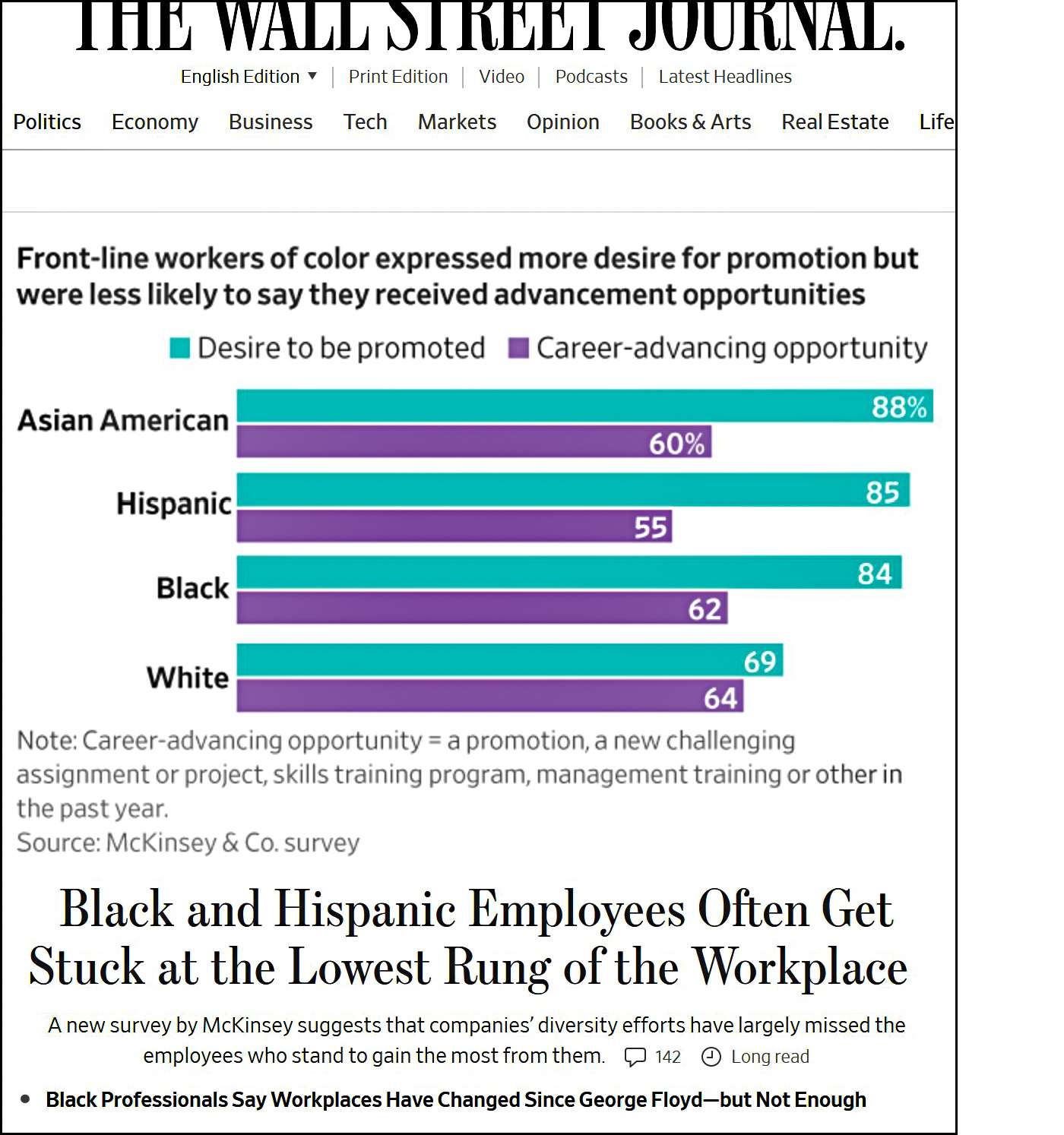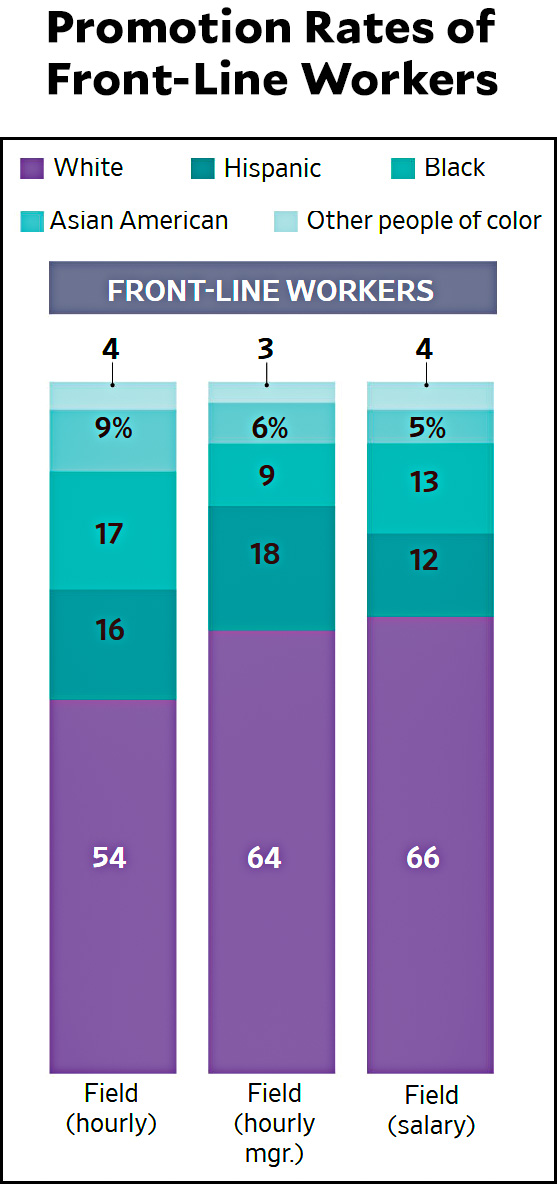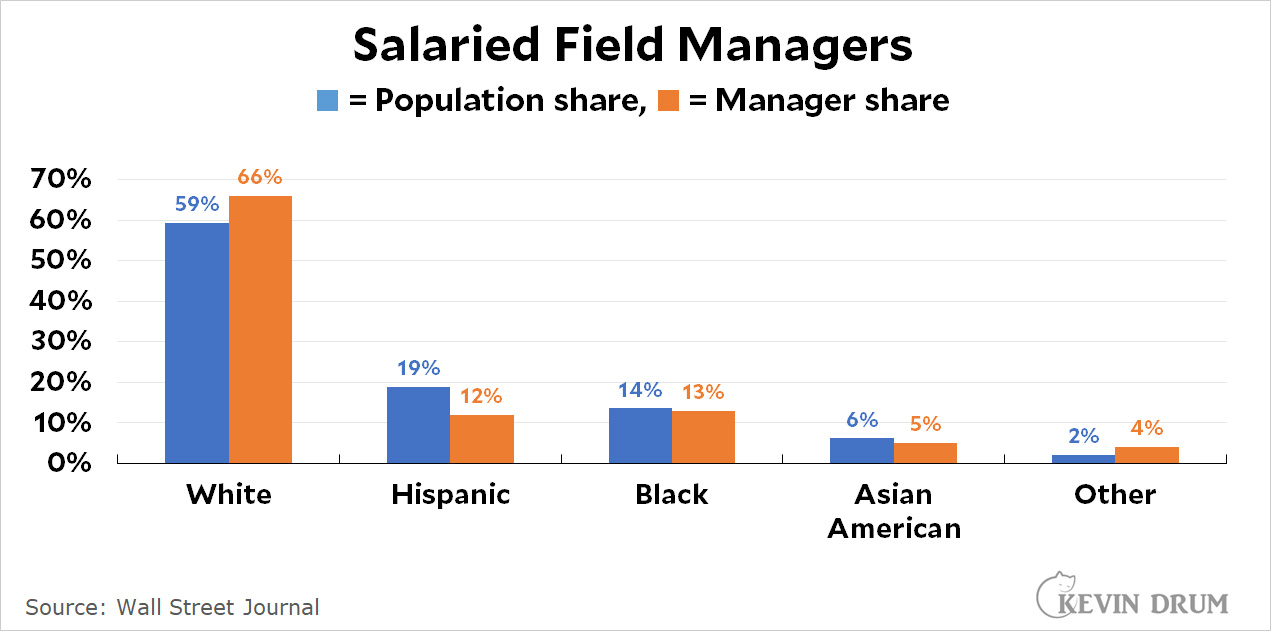The Wall Street Journal had this story splashed across its front page last night:
 Methinks the Journal is trying too hard. It's true that white workers get more career-advancing opportunities than POCs according to this McKinsey report, but the numbers are 55%, 60%, and 62% compared to a white baseline number of 64%. If there's anything surprising here, it's that the POC numbers are within a hair's breadth of the white number. Only Hispanics are lower by any significant amount, and even there it's only nine points.
Methinks the Journal is trying too hard. It's true that white workers get more career-advancing opportunities than POCs according to this McKinsey report, but the numbers are 55%, 60%, and 62% compared to a white baseline number of 64%. If there's anything surprising here, it's that the POC numbers are within a hair's breadth of the white number. Only Hispanics are lower by any significant amount, and even there it's only nine points.
There's also this about front-line workers:
They are less likely than their white peers to find springboards to higher-paying jobs on the front lines, such as assistant store manager or line supervisor. The drop-off is steepest among Black workers,  who make up 17% of hourly jobs at major companies but see their numbers shrink to 9% one step up the ladder in low-level supervisory or management roles.
who make up 17% of hourly jobs at major companies but see their numbers shrink to 9% one step up the ladder in low-level supervisory or management roles.
Apparently the print edition doesn't bother printing the chart for this, but it's in the online edition and I've posted it on the right.
And it's odd. It's true, for example, that Black workers go from 17% of hourly field workers to 9% of hourly field managers. That's a big drop. But then they inexplicably increase to 13% of salaried field managers. That's the best of any POC group—though still considerably worse than white field workers, who are promoted at a higher rate than any other group.
But what's really surprising about this chart is that both Black and Asian American workers are represented at the highest level (salaried field managers) right in line with their numbers in the general population. Only Hispanic workers are represented below their share of the population:

If anything, all this data ought to be presented as surprisingly good news, at least for Black and Asian American front-line workers. Hispanic workers aren't doing as well, but even there they aren't as far behind as I would have guessed—especially given the language issues that might be playing a role here.
The Journal's take is that corporate diversity efforts are floundering at the level of front-line workers. But based just on the statistics they themselves present, I'd say their diversity efforts are paying off pretty well. Am I misreading something here?




